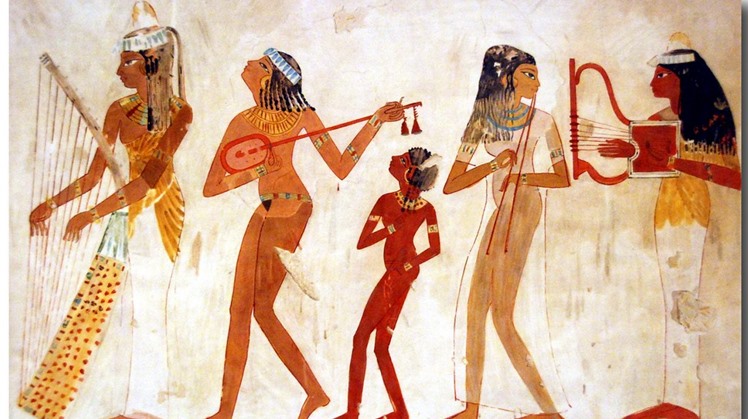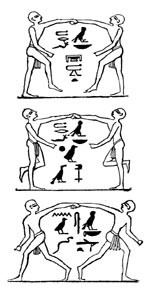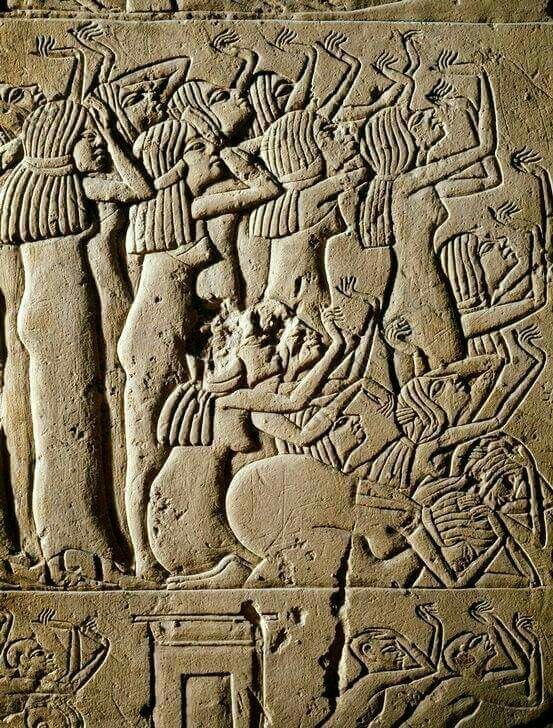EGYPTIAN ANTIQUITY

Dance in ancient Egypt
Dancing played a vital role in the lives of the ancient Egyptians. However, men and women are never depicted dancing together. Dance groups were accessible to perform at dinner parties, banquets, lodging houses, and even religious temples. Some women from wealthy harems were trained in music and dance. They danced for royalty accompanied by male musicians However, no well-bred Egyptian would dance in public, because that was the privilege of the lower classes.
Wealthy Egyptians kept slaves to entertain at their and present pleasant diversion to their owners
There are many words in the ancient Egyptian language that carried the meaning of “to dance”, most notably the word “epa”. The hand-in-hand dance and the clapping of hands appear already before 3000BC.
Professional groups of singers, musicians, and dancers were referred as “Khener”.
They are depicted as entertainers for religious ceremonies, entertaining the deceased kings, though they were not solely religious. Khener were used at the Temples of Hathor (principal deity of Dance), Bat, Wepwawet, and Horus Iunmutef.
Dwarfs and pygmies were known from the Old Kingdom and were prized for their rarity and as dancers were hired for special occasions.
The ancient Egyptians used a vast array of musical instruments such as sistrums, harps, drums, flutes, cymbals, clappers, and tambourines that played a prominent role in melodic compositions of ancient Egyptians composers and musicians.
Note that sistrums are still used in Ethiopian Church!
Suggested Readings
Historic Illustrations of Dancing by an ANTIQUARY Chapter I
Dance in Ancient Egypt Wikipedia
Did-ancient-Egyptian-civilization-know-dancing
by Dr. Hussein Abdel-Basir, director of the Museum of Antiquities of the Library of Alexandria
Dances related with religion



Nile Flood Feast:
(The New Year celebration)
Dancing played a vital role in this festivity as it helped transform the dangerous Sekhmet into the mild Hathor, thereby protecting the ancient land from Sekhmet’s evil and deadly demons. These dances included all possible forms of movement including acrobats and exotic foreign dances.
- Figure dance
It was universally adopted throughout the country, in which two partners, who were usually men, advanced toward each other, or stood face to face upon one leg, and having performed a series of movements, retired again in opposite directions, continuing to hold by one hand and concluding by turning each other round. That the attitude was very common is proved by its having been adopted by the hieroglyphic describing “dance”.
Funeral Dances
Dances associated with funerals included ritual, postures, gestures and secular dances, Old Kingdom performers included a specialized group of female dancers called “the acacia house”. They followed mummification and were aimed at appeasing the goddess Sekhmet and rejuvenating and mourning the dead.
During the Middle and New Kingdom periods, a separate funeral dance was practiced dedicated to Hathor in the goddess’s role as guide for the dead into the afterlife. It involved leaping or skipping and was accompanied by a sung or spoken prayer to the sounds of percussion, including the clapping of hands and sticks. Another specialized troupe of sacred dancers, (mww or muu) existed across the Kingdoms. They performed at various points in the funeral, wearing kilts and crowns of woven reed or palm fiber that signified their role as ferrymen who symbolically delivered the deceased to the netherworld.
Sed festival dances
took place during jubilee ceremonies which celebrated the renewal pledge to the king. Such dances varied in accordance to the religious significance and the reflection of the local mythology of the God to whom they were directed.
Opet Festival
Associated with God Amun‘s visit to his wife Goddess Mut from Karnak Temple to Luxor temple. This procession was marked by groups of women doing acrobatic dances together with dark dancers, who jumped and merged with the drums.
Feast of Min
Min is the god of fertility and regeneration. The dancers in this feast were members of his cult. Drawings representing this feast showed priests and monkeys dancing.
Top Image : Egyptian musicians Credit : egyptfwd
